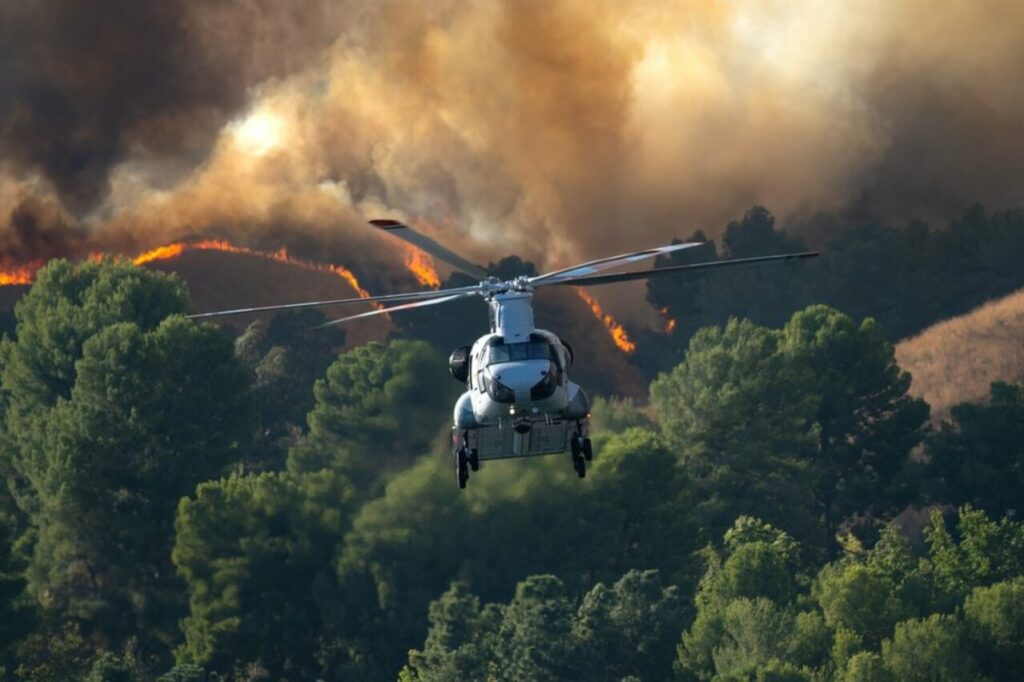The escalating frequency and intensity of wildfires across the United States pose a critical challenge for emergency responders. NASA and the FAA are responding to this threat.
Intensifying wildfires, erupting with greater ferocity and destroying landscapes at an alarming rate, are pushing traditional firefighting tactics to their limits.
To combat this growing threat, NASA and the Federal Aviation Administration (FAA) have joined forces. The aim of the new collaboration is to develop ground-breaking wildland fire technologies.
This collaborative effort is spearheaded by NASA’s Advanced Capabilities for Emergency Response Operations (ACERO) project. It aims to revolutionize airspace management and unlock the potential of drones in wildfire response.
Overcoming In-Flight Visibility Problem
One of the main hurdles in traditional aerial firefighting is visibility. Smoke and low-light conditions often restrict manned aircraft operations, leaving critical firefighting windows dangerously narrow.
Precious time is lost as pilots wait for visibility to improve, jeopardizing lives and property. Drones, however, offer a promising solution.

By leveraging their ability to operate remotely, these uncrewed aerial vehicles (UAVs) could enable continuous monitoring. This would permit fire fighting throughout the night and during conditions of limited visibility due to heavy smoke.
Equipped with infrared cameras, they could pierce through the smoke, providing vital intelligence to fire fighters on the ground.
Imagine a scenario where fire fighters can pin point the hottest zones of the blaze or track the fire’s movement even during the dead of night. This is the enormous potential that drones hold.

UAVs and Airspace Management
However, using these drones safely and effectively requires advanced airspace management technologies.
The design of current air traffic control systems does not allow for the complex choreography of multiple drones operating in a dynamic and often chaotic environment.
Imagine a swarm of drones buzzing around a wildfire, each tasked with a specific mission. These include monitoring fire lines, dropping fire retardant, or relaying critical data.
Without a sophisticated system to manage their airspace and prevent collisions, this scenario could quickly turn disastrous.
This is where the Wildland Fire Airspace Operations research transition team comes in. Over the next four years, this collaborative effort will focus on developing these crucial technologies.
The team’s mission is to create and test new airspace access and traffic management systems. These will be specifically designed to support wildfire response.
These advancements will not only improve current fire fighting operations. This project also paves the way for a comprehensive future vision for wildland fire management, currently under development by NASA and other government agencies.
A key aspect of this initiative involves testing and proving drone technologies for use by both commercial entities and government agencies.

Equipping UAVs With Necessary Systems
Safety is paramount. The team is launching a rigorous evaluation of various drone platforms. They will scrutinize each platform to confirm it has all the necessary systems.
This includes reliable communication systems, fail-safe mechanisms, and weatherproofing capabilities.
This is necessary to withstand the harsh conditions often associated with wildfires. By ensuring the safe and efficient operation of these UAVs, the team paves the way for their seamless integration into future wildfire response efforts.
ACERO, led by NASA’s Ames Research Center in Silicon Valley, plays a pivotal role in this collaborative effort, drawing upon the agency’s expertise in aeronautics research.
They bring to the table a wealth of experience in developing cutting-edge aviation technologies, from guidance systems to autonomous flight control.
This expertise will be crucial in creating next-generation drones specifically tailored for the demands of wildfire response.
Summary
This joint effort by NASA and the FAA represents a significant step forward in the fight against wildfires.
By harnessing the power of drone technology and developing innovative airspace management solutions, they equip firefighters with the tools they need to combat these devastating blazes more effectively.
The potential benefits extend far beyond immediate fire suppression. Imagine drones being used for post-fire damage assessment, search and rescue operations, or even targeted reseeding efforts – the possibilities are vast.
As wildfires continue to pose a growing threat, this collaboration between NASA and the FAA offers a glimmer of hope, paving the way for a safer and more effective future in wildland fire management.

Click the banner to subscribe to our weekly newsleter.

Click the photo to join our WhatsApp channel so then you can stay up to date with everything going on in the aviation industry!








